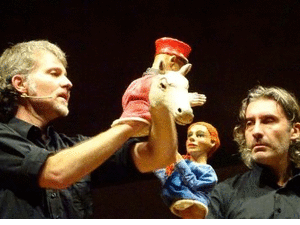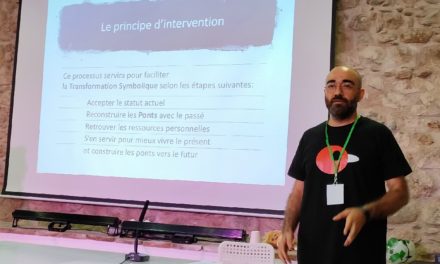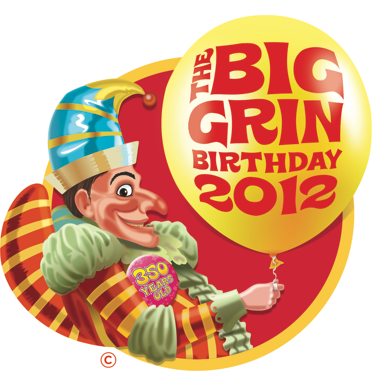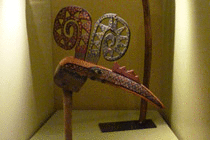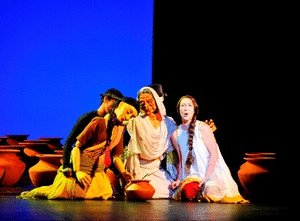The show ‘El Zorro ‘ was seen a few days ago in one of the Institut del Teatre classes Barcelona – as well as in La Mostra d’Igualada-. the leading performing arts market for young audiences in Catalonia. The show is a creation of the puppeteers Eudald Ferré and Luca Ronga, under the direction of Lluís Graells. A creation but at the same time a major challenge to which director and puppeteers have had to face up with in wishing to set up a Catalan traditional puppeteer play without the ‘castellet’ (little booth) so that the puppet and its manipulator are always in sight. Is such boldness feasible? The result of the experience says so well beyond.
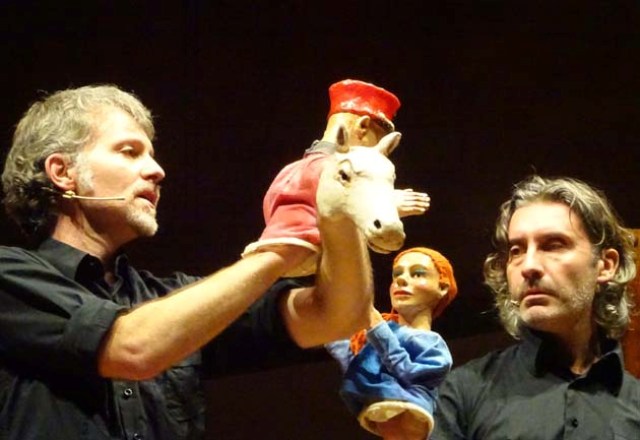
The proposal of the Ferré-Ronga tandem could be defined as a bold experiment, two high-voltage-virtuosity puppeteers. The first one, until recently one of the active heads of the Company Pa Sucat, had already stood out with the show ‘Les Maravelles d’Orient‘ of which he was the director , the puppets builder as well as the puppeteer after walking a very long way through the Catalan Glove Puppetry skill. The second one, an Italian from Bologna, is nowadays one of the most renowned Punchinello masters in Europe, with such a fine execution technique that allows him to perform at extremely different speeds being at the same time, an explorer of the Punchinello world through his complicity with the great playwright Gigio Brunello.
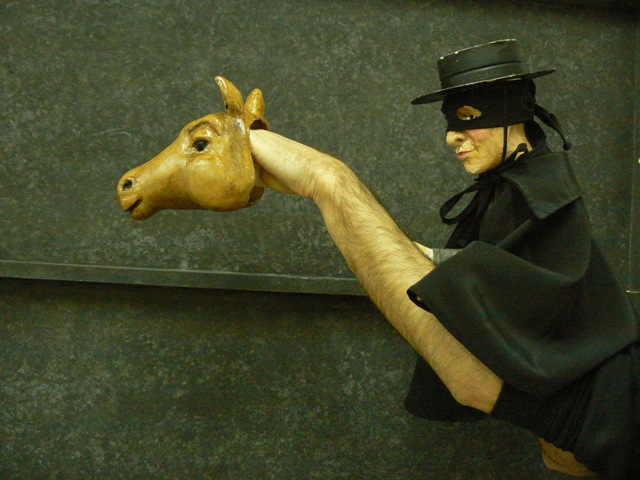
The go-ahead thesis comes from one of the principles both manipulators have taken on as their own: to be a good puppet handler, one must be a good actor. At least, one has to be able to perform with the whole body. This is a thesis Luca Ronga has tried in different workshops, one of them was carried out at the Institut del Teatre (look here), and that they have decided to bring to the stage. That is to say, to move from the theory and studio work to the gig practice in front of the audience. Consequence: the ‘castellet ‘ (little booth) must be removed and see what happens.
Then the show takes on some characteristics of style that we could define as scenic ellipse. A practice that actually began in the seventies when the puppeteers decided to get out of the ‘castellet’ (little booth) and to remove the barriers which had separated puppeteers and adience until then. Nevertheless the difference and originality of the proposal is to be found in the fact that it is played with the same or similar technique to the puppets with ‘castellet’ but without it. That means that the ‘castellet’ ellipse visibility is sought. A contradiction that creates an intrigue at the same time as it reveals what is usually kept hidden , with a highly attractive consequence.: the puppeteers’ bodies play the part of the elliptical ‘castellet’ . Some invisible but ,at the same time, very much alive ‘castellets’ , since they move and become a curious body continuity of the puppets which are placed on the hands , as required. So this way the puppeteer’s body steps in the performance with a technique halfway between the mime, the mask and the puppet.
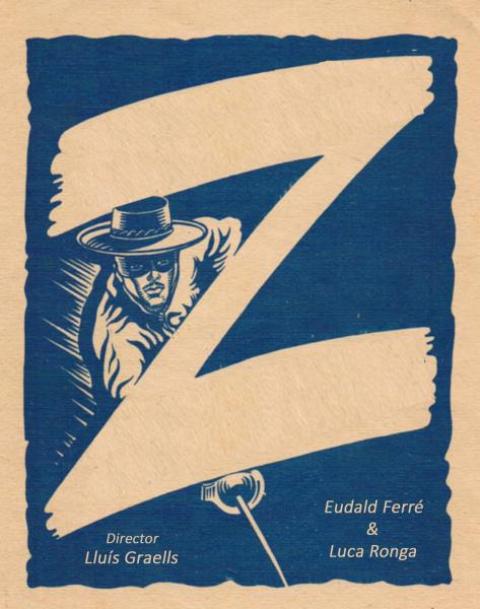
Such audacity requires a great talent with regard to the handling and , at the same time , a considerable body control, demanding a composition of the scene of a choreographic sort. A challenge of which the director, Lluís Graells , has been fully aware, by grasping the nettle and incorporating the musical element, very well solved by Pep Boada, as a thread capable of sewing the scenes without slowing down. The need for this rhythm means that the puppeteers cannot stop much in what they can do more, sacrificing part of the puppeteer’s virtuosity but gaining in stage motion and in symbolic intentionality through the visual and sound gags in the scenes composition.
That scenic drift that obliges the puppeteers to show their faces also takes them to force some traces of neutrality in their visages essential in order to avoid detracting the puppets from their leading role, unlike the bodies that do get involved in the characters’ emotions. That opposition between the neutrality in their visages and the body acting involvement, represents the most disturbing and tensional axis of the play in such a way that one sometimes even wonders whether the puppeteer face should be given more freedom from time to time as it goes off in the heat of some interpretative moments, taking the unavoidable risk of covering the puppet up, what would increase the ambiguity of the essential ellipse of the play, which is to turn the invisibility of the ‘castellet’ into visible…
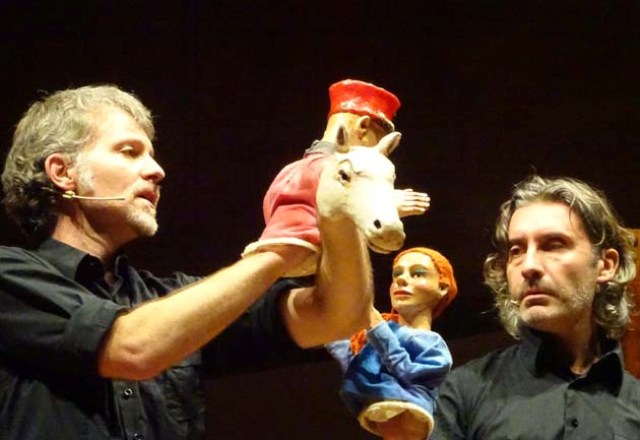
As it can be seen, the challenge has forced both director and puppeteers to introduce themselves to unknown lands, opening new tracks and finding out stylistic possibilities of techniques and language junction. To do so, they have chosen a relatively easy theme when it comes to its understanding: the story of ‘el Zorro’ , with a plot of good guy and bad guy in which those characters are represented by the county head wealthy man of the town and his military henchmen and by the simple people -from the town- together with some lords of high-rank but noblemen and with a noble heart -like ‘el Zorro’ himself and his sweetheart. In this way, the predictability of the story, enables its creators to explore the new ways to tell it more fluently.
It is without a doubt, one of the riskiest and wittiest plays, intended for children and a family audience, seen in recent years and which wakes us up the appetite towards new experiences that dare, moving in this line of the pursuit of the unknown, to touch issues that also lead us towards new and hidden paths.
Z – Le avventure di Zorro from Luca Ronga on Vimeo.

